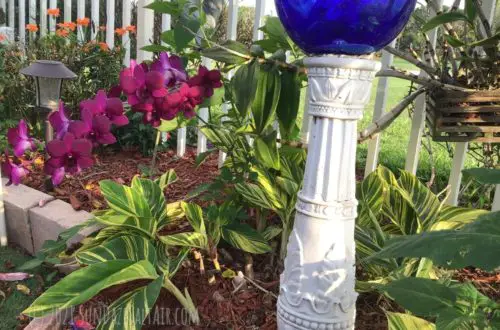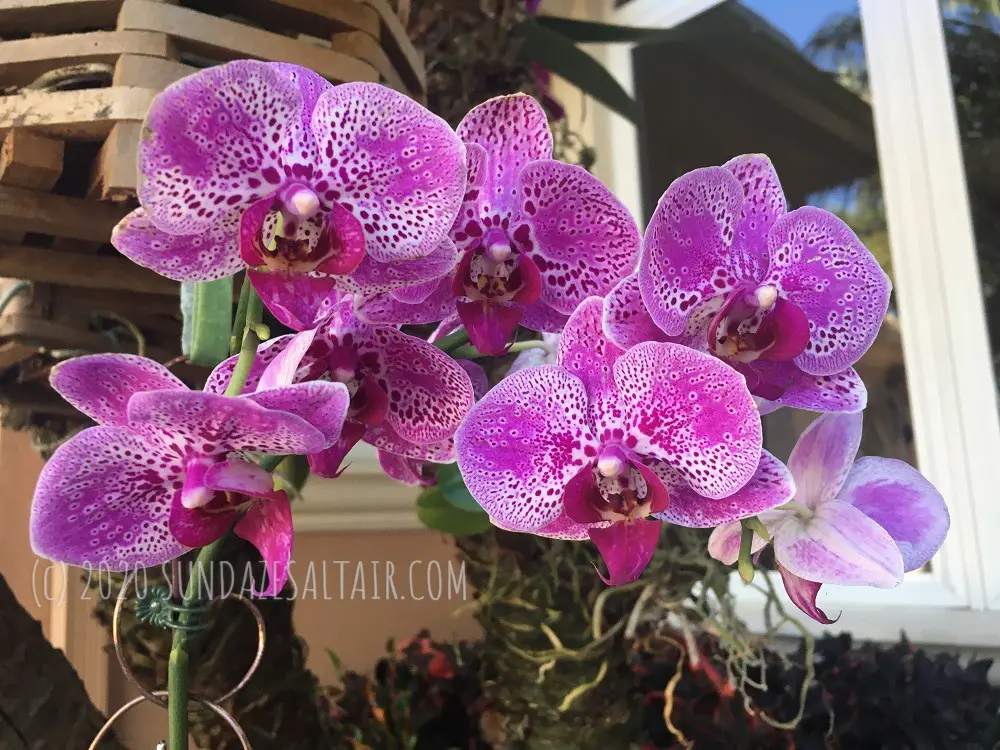
How Much Cold Can A Phalaenopsis Orchid Tolerate? Orchids & Cold Weather
How to Care for Outdoor Orchids When Temperatures Drop
As an arctic blast prepares to sweep all the way to the Florida Keys, a question on many orchid growers’ minds is, “How cold is too cold for my orchid?” Well, it’s on the minds of many of my neighbors, most of whom have a Phalaenopsis, Vanda, Cattleya or other orchid growing on trees or in baskets. As a matter of fact, in January, blossoms tumble from branches and baskets brightening each yard with flashes of color each more eye-catching than the next. It’s like springtime in winter… that is until a Canadian cold front is forecast to blast frigid artic air our way. Which begs the question, “How cold is too cold for an orchid?” Let’s find out how much cold a Phalaenopsis orchid can tolerate, plus what can be done to protect your orchids from brutal winter temperatures.
Read on to find out what to do when conditions become too cold for your orchid, along with factors that affect your orchid’s cold survivability. Plus, discover cold-hardy orchids bred to survive frigid temperatures even in the alpine zone of the Himalayan Mountains…
Orchids & Cold
What Is Cold Hardiness In An Orchid?
Cold hardiness is a measure of how well an orchid can adapt to cold stress. It is determined by the plant’s genetic make-up and is exhibited in its response to certain environmental conditions. Some orchid species are unable to survive frosty temperatures, while others tolerate frost and freezes just fine, even thriving in the cooler conditions.
An Orchid for Every Climate
As one of the most diverse families of flowering plants on earth, the various species of orchid have evolved to adapt and survive in all manner of climates, habitats and elevations. While we may be most familiar with tropical orchids, the sheer variety of orchids means orchids can actually be found in almost every imaginable climate and corner of earth, even places that would be considered inhospitable to orchid life…
For instance, orchids can even be found on the chilly summit of the Himalayas, if you can imagine. Well, at least certain Dendrobium Nobile can. The enormous Dendrobium genus is just one example of how diverse the orchid family is — even within the same genus. From Dendrobium that inhabit some of the coldest places on earth to those that prefer the heat of the Australian outback, orchids thrive in a remarkable range of places as well as conditions. There really is an orchid for every place. Well, almost every place…
Fun Fact! The One Place You Won’t Find Orchids…
As adaptable as they are, one place you will not find orchids is a place you are not likely to find many people or other vegetation either… namely, the icy tundra of Antarctica or the equally icy Northern reaches of Greenland, Canada and Siberia which make up the Arctic Circle.
**Looking for orchids to grow in freezing temperatures? Scroll down to discover cold-resistant orchids…
**Note: This post contains affiliate links for which a small commission may be earned if you decide to make a purchase through a link.
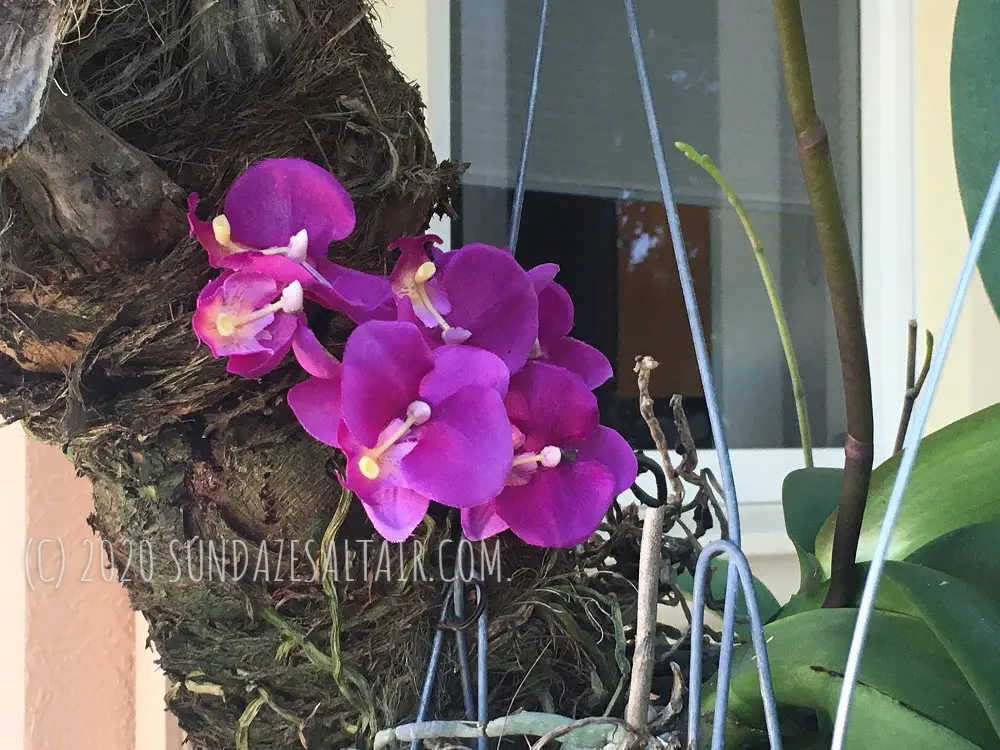
Most Commonly Grown Orchids Are Tropical, Including Phalaenopsis
Phalaenopsis, along with other commonly cultivated orchids like many species of Dendrobium, as well as Oncidium and Vanda, are considered “tropical orchids.” Such orchids originated in warm, balmy locales that would be considered prime vacation destinations. Not surprisingly, such orchids have a distinct preference for warmer temperatures year-round.
Fun Fact! Even Within “Tropical” Orchids, There Are Cold-Tolerant Species
Unlike Dendrobium Phalaenopsis which prefers temps above 60 degrees F and will drop its leaves if exposed to too much cold, and Dendrobium Bigibbum, which basks in Australian heat, Dendrobium Nobile need cold temperatures to bloom. Cattleyas also come in a number of hardy varieties that can handle temperature extremes from the mid-20’s F to 100° F.
Among the very tropical Vanda, surprisingly, white or yellow Vandas are apparently considered less cold-tolerant than their colorful counterparts. Perhaps there is something to this, as the winter blooming orchids pictured on this page are primarily of the purple variety, while orange and yellow varieties have not yet begun to bloom…
**Looking for cold-tolerant Phalaenopsis orchids? Keep reading to learn more…
Where Can You Safely Grow a Phalaenopsis Outdoors in the US Year-Round?
Phalaenopsis can comfortably grow outdoors in the United States if you live in USDA plant hardiness zones 10 through 12. Find out here if you can grow your Phalaenopsis outdoors by typing in your zip code.
What Temperatures Can a Phalaenopsis Tolerate?.
Although Phalaenopsis orchids originated along the tropical equator, these “warm weather” wonders actually enjoy a fairly wide range of temperatures. Anywhere from the 50’s F range into the 90’s F range can be well-tolerated by a Phalaenopsis.
In fact, you may be surprised to hear that, despite its tropical “roots,” Phalaenopsis actually benefits from a moderate temperature drop during certain times of the year….
**TIP! Phalaenopsis & the Benefits of An Autumn Chill
A few weeks of chilly weather can actually stimulate a Phalaenopsis to set its flower spikes, paving the way for beautiful mid-winter blooming. Read more about winter blooming a Phalaenopsis here…
Now, read on to discover just how much extreme weather a Phalaenopsis can endure…
Phalaenopsis & Temperature Extremes
While Phalaenopsis and other tropical ‘chids will put up with a range of temperatures for a time, we all know of, or maybe even experienced, the ill-effects of an orchid that has spent too much time in the cold- bud blast, anyone? Yes, there are few better (or worse) examples of the detrimental effects of prolonged cold exposure on orchids than the dreaded bud blast. However, there are other, more insidious manifestations of cold damage to an orchid as I discuss below.
So, what happens when unseasonably frigid weather comes to the tropics?
An Arctic Cold Front Slides Into the Tropics
Knowing the risks, recent freeze warnings had even the most seasoned growers worried. Overnight temperatures were expected to drop into the 30’s F. While daytime warming was predicted, freezing conditions were expected for at least a few nights. I moved some orchids inside, however, many had to remain outdoors including orchids growing attached to trees. The sheer number of orchids in baskets also made moving them a challenge.
We hunkered down and hoped for the best.
Can Phalaenopsis Orchids & Buds Survive Freezing Overnight Temperatures?
Temperatures fell to 32° F. Heaters that hadn’t been used in over a year were turned on. Morning finally arrived along with time to assess the situation. Initial inspection revealed no visible trauma to any orchids, however, cold damage in an orchid does not typically show up right away. Plus, more freezing nights and even a morning or two of frost were predicted.
When Do Cold Injury Symptoms On An Orchid Become Visible?
Signs of cold injury on an orchid tend not to become apparent until some time after exposure to critically low temperatures. In places where temperatures don’t warm up until spring, often cold injury to roots doesn’t become obvious until then.
Wait Until Temperatures Rise to Assess Damage
The speed at which symptoms develop depends on the severity of exposure and the conditions in the growing environment. The stress of warming temperatures typically accelerates and reveals symptoms of cold injury.
Our cold snap was followed by seasonably warm weather. As the temperatures rose, it became clear that even the budding Phalaenopsis managed to escape without signs of “bud blast.” With each passing day, another bud opened to unveil stunning magenta Moth Orchid petals…
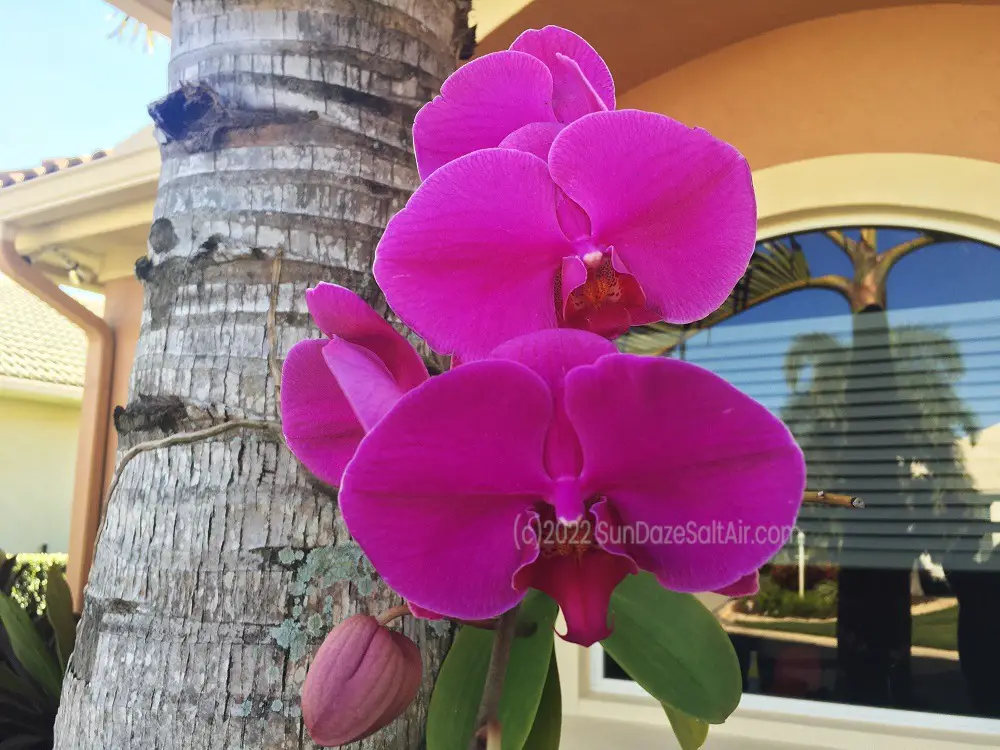
What Are Visible Signs of Cold Damage In An Orchid?
In addition to the above-mentioned bud blast, there a few more signs of cold damage to look for:
Discoloration & Lesions
Black spots on leaves and pitted depressions, also known as necrotic spots, indicate sections of the leaf that have perished from cold exposure.
Browned, Shriveled Areas & Slowed Growth Also Indicate Possible Die-Off
If water gets a chance to soak into tissue, it may accelerate the rate of death causing wilting and browning to occur. Brown, shriveled buds that fail to open, shrivel and die (aka “bud blast”) is the most obvious sign of cold damage on new buds.
Similarly, brown, shriveled canes or pseudobulbs are signs of possible cold or frost damage to look for on a sympodial orchid.
Susceptibility to Bacteria & Rot
Even if your orchid is very much alive, water that has soaked in may lead to rot. Untreated rot can cause a dangerous susceptibility to bacteria and fungi.
So, why do some Phalaenopsis orchids experience bud blast and cold damage while others don’t? Let’s investigate, plus one thing you should never mix with cold and orchids…
How Much Cold Can a Phalaenopsis Take?
Now we have gathered that occasional brief periods of temperature extremes above 100° F (38° C) and down to freezing, 32° F (0° C) won’t necessarily harm most orchids. The important caveat is that no frost forms on orchids and their leaves when the temperature drops…
Avoid Frost Damage: What Is Considered Frost Damage?
How Frost Damage Occurs
Frost damage occurs when dew freezes after it has condensed on leaf surfaces if the air temperature drops below freezing. On at least one morning during the recent freeze, orchid leaves showed visible frost. Since we are in the subtropics, thankfully, fairly quick daytime warming prevented lasting frost damage.
So, how can you prevent or mitigate frost damage to your orchid?
How to Protect Your Orchid From Frost Damage So It Survives Freezing Temperatures
1. Do NOT Water Your Orchid Prior to A Cold Night
Do not water your orchids the day of or even the days before you expect cold temperatures. The drier your orchid is and the less moisture it has inside its cells, the better your orchid will survive a freeze. Also, bud blast is more likely to occur not just from a cold spell, but from the effects of frost. So, be sure to avoid dampness before cold.
2. Consider Covering Your Orchids Or Sheltering Them Under Other Vegetation
If extreme cold for a longer duration is forecast, if possible, consider covering your orchids with plastic tarp, burlap, sheets or any covering that can insulate and protect your orchids from the elements. Use clothespins or twine to hold the covering in place. Be careful with plastic, however…
Avoid This Plastic Mistake
Avoid using plastic directly on your plants. If left on, rising temperatures can cause the plastic to trap too much heat and cook your orchids. It is best used only for wind protection at night with a more ventilated option during the day.
Instead of Plastic, Try…
Frost cloth, available here and in hardware stores, is lightweight and traps heat but is breathable as well.
TIP! Rearrange Your Outdoor Orchids
During the recent arctic blast, many growers left their orchid baskets outside grouped together. The rationale is that baskets clustered in groups nestled under trees can trap some heat and act as shelter from the cold.
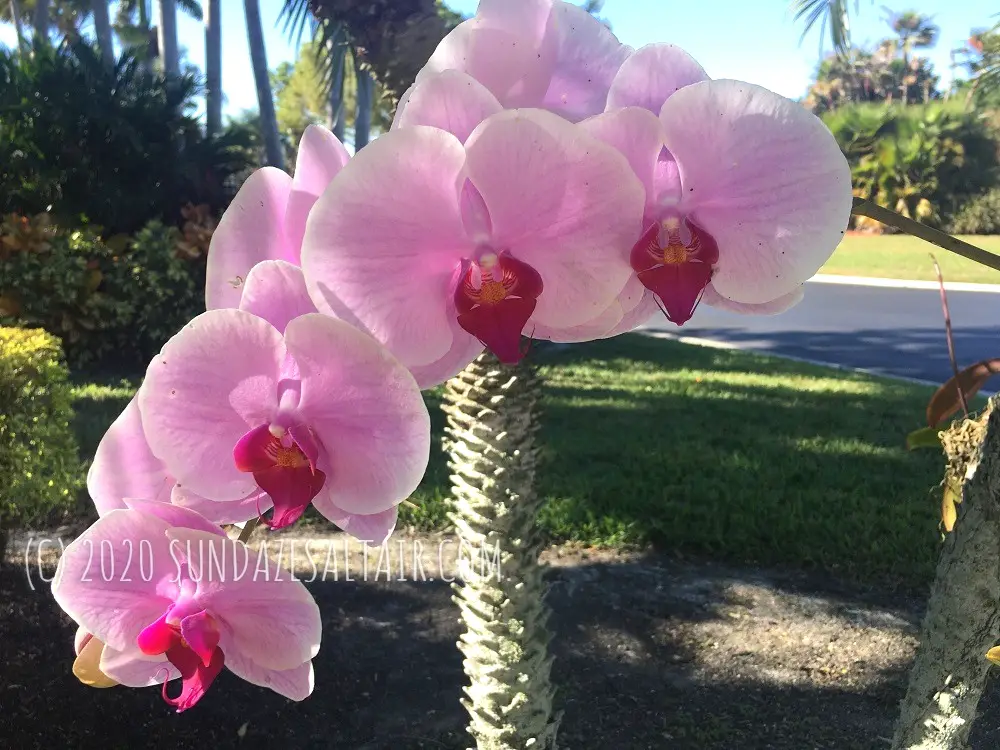
Why Do Some Phalaenopsis Experience Bud Blast & Cold Damage While Others Do Not? Three More Factors That May Contribute to Cold Damage
Buds may be the first casualty in intense cold, but since some orchids weather temperature drops into the 30’s with little damage, is is worth considering these other factors:
1. Variety of Phalaenopsis: Does the Type of Phalaenopsis Make a Difference in Cold Hardiness?
It has been stated that certain varieties of Phalaenopsis don’t handle cold as well and are consequently more likely to suffer damage. According to the St. Augustine Orchid Society, certain standard varieties, including Amabalis, Schilleriana, and Stuartiana are less cold tolerant, while Phalaenopsis from higher elevations, such as the foothills of the Himalayas including Lindenii, Lobbii, and Mannii varieties can handle temperatures into the 50’s and below.
2. Drafty Windows & Indoor Orchids
Many indoor growers avoid keeping their indoor Phalaenopsis in rooms with temperatures cooler than 60° F. Indoor orchids are very susceptible to drafts, especially if kept near cold, frosty windows. Be sure to keep your tropical orchids away from drafty windows especially on freezing nights.
3. Orchid Age: Does Your Orchid Have Buds? Is Your Orchid a Seedling Or Young Plant?
A Phalaenopsis or any orchid that is already in bloom will fare better in weather extremes than one with tender buds, which may be lost. Similarly, seedlings or young plants are typically more sensitive to cold than mature orchids.
Looking For Orchids That Prefer Cold Weather? Consider Terrestrial & Semi-Terrestrial Orchids
If you live in cool, temperate zones, you can grow orchids quite easily with more cold-resistant orchid varieties. Orchids that are native to temperate climates are quite cold-resistant, including terrestrial orchids. Unlike their tropical, epiphytic cousins which grow with their roots attached to trees and rocks, terrestrial orchids usually prefer to grow in regular soil. Their cold tolerance makes terrestrial orchids a great choice for outdoor in-ground planting in cool, temperate regions.
Terrestrial and semi-terrestrial orchids include Cypripedium and Cymbidium, which are highly versatile plants that can be considered terrestrial, epiphytic or lithophytic.
Lady Slipper Orchids (Cypripedium)
Compared to most orchid species, the very showy Cypripedium, commonly known as Lady Slipper orchids are very hardy, with the ability to even endure below freezing temperatures. Plant them if you live anywhere in the United States in USDA grow zones 2 through 8, depending on the species. Pink Lady Slipper is known to be especially cold hardy. Since these terrestrial orchids are frost hardy, they are one family of orchids you won’t have to worry about when the temperatures drop into the low 30° range.
Cymbidium Orchids
Cymbidium orchids are fantastic to grow in temperate climates with an ability to handle winter temperatures in the 40’s F. Native to cool mountainous regions of Asia, Cymbidium orchids are known to tolerate frosts but not freezes. With their bloom triggered by falling temps and reduced water, their natural bloom season is in winter.
Cymbidium goergingi, also known as the Noble orchid is possibly the most cold hardy of all. A cold hardy evergreen that is native to far Northern reaches of Korea and Japan, it is unique in its ability to tolerate freezing temperatures. Not to mention, its long-lasting flowers are renowned for possessing an amazing fragrance.
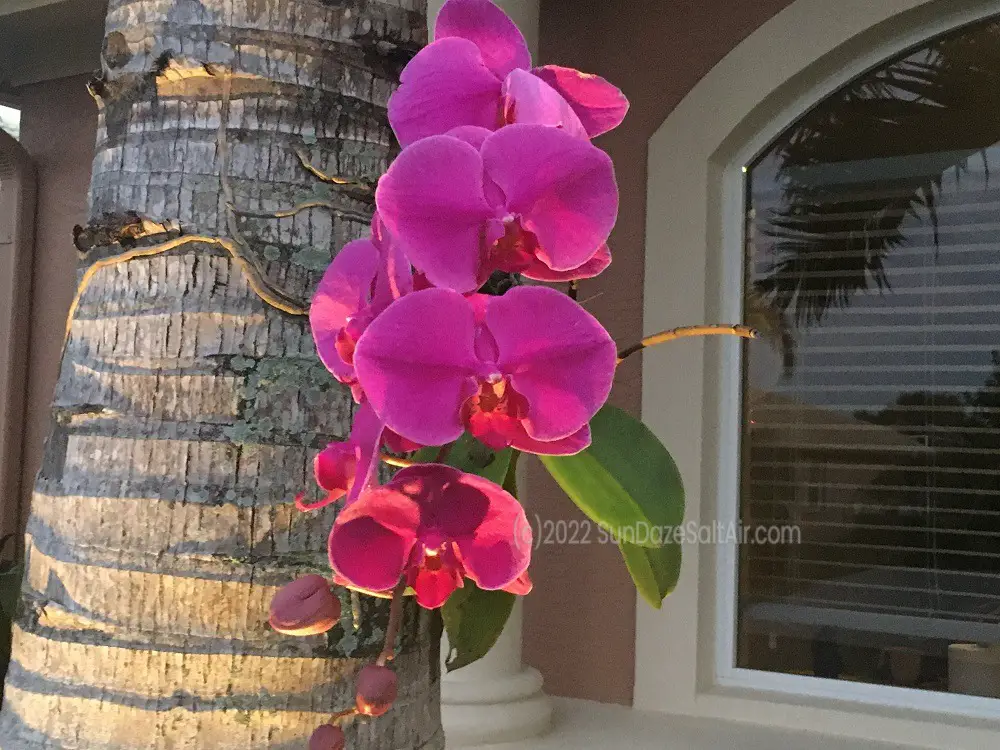
Conclusion: How Much Cold Can a Phalaenopsis Orchid Tolerate? Orchids & Cold
Bookmark This Page to Ensure Your Orchids Survive Chilly Winter Weather Wherever You Live
Even in the tropics, sooner or later bone-chilling winter cold eventually finds its way– even if only for a night or two. No matter where you live, bookmark & share these tips to help your ‘chids survive the winter chill.
Also, if you live in a temperate region, consider planting some of the unique, cold-hardy terrestrial orchids recommended here to make your garden standout even during the coldest time of the year.
How do you care for your orchids in cold weather? Let us know in the comments!


You May Also Like
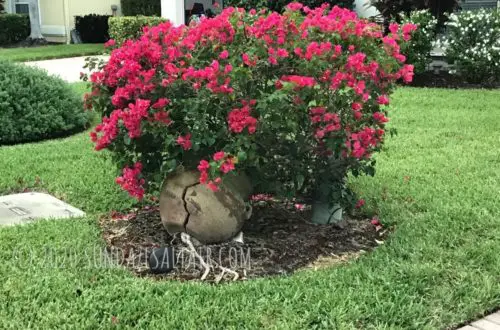
How To Grow Bougainvillea In A Pot So You Can Enjoy All Its Beauty & Privacy While Minimizing Its Size & Spread (With Pictures)
September 28, 2020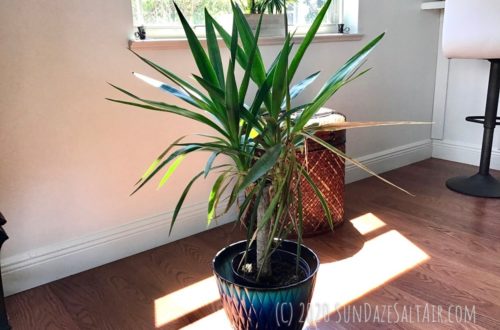
Yucca Plant Rescue: Why Is My Yucca Plant Drooping? How To Revive A Drooping Yucca Plant (With Pictures)
September 23, 2020